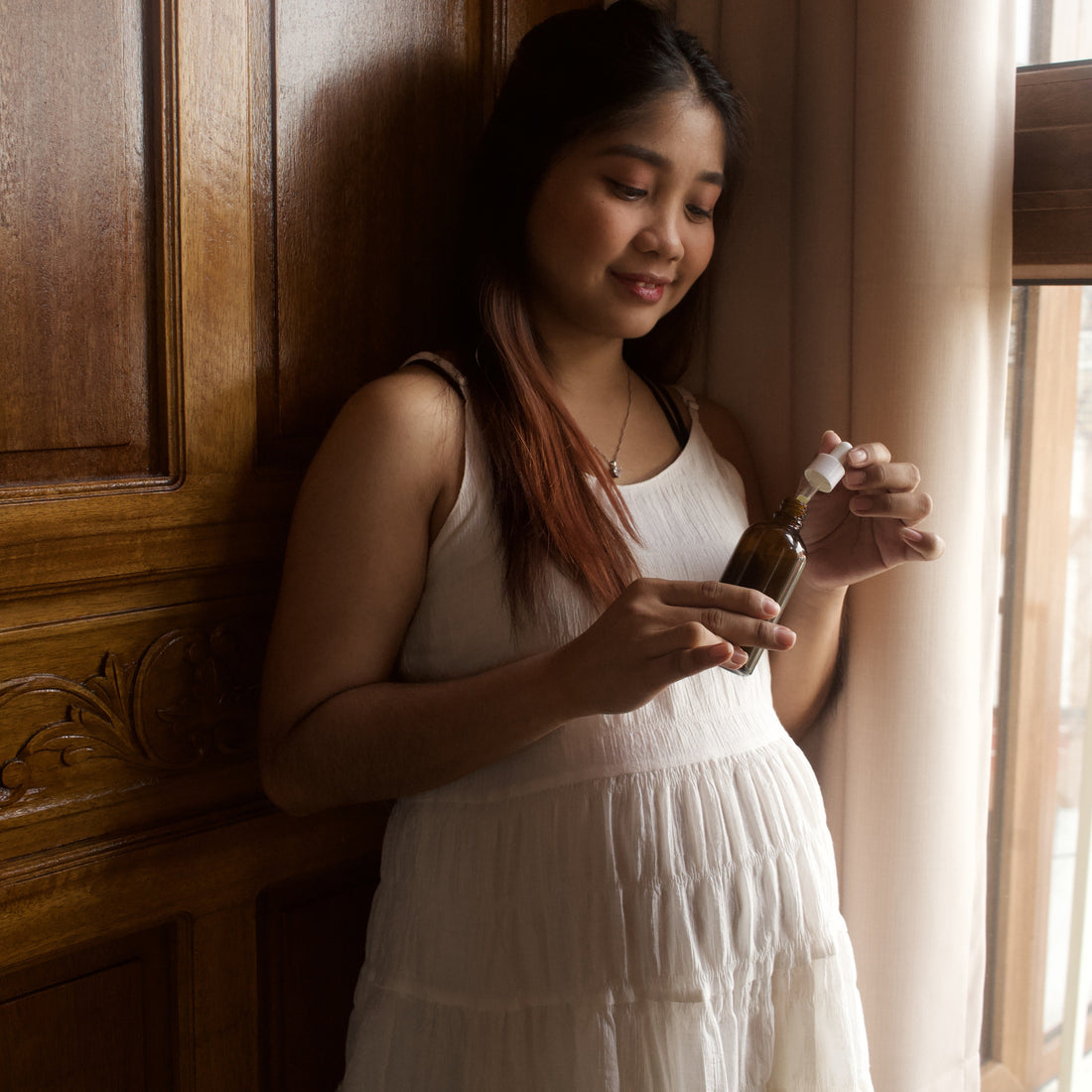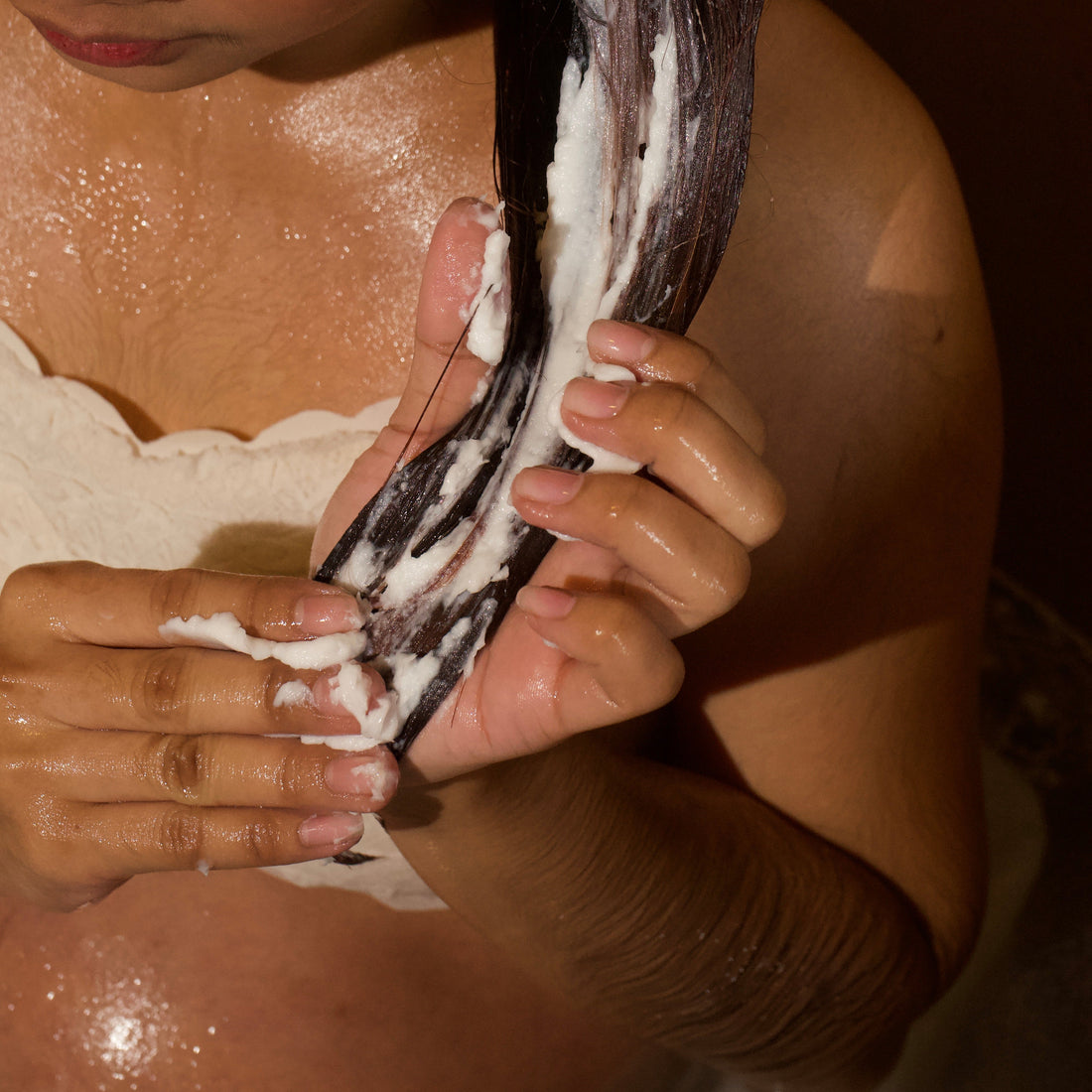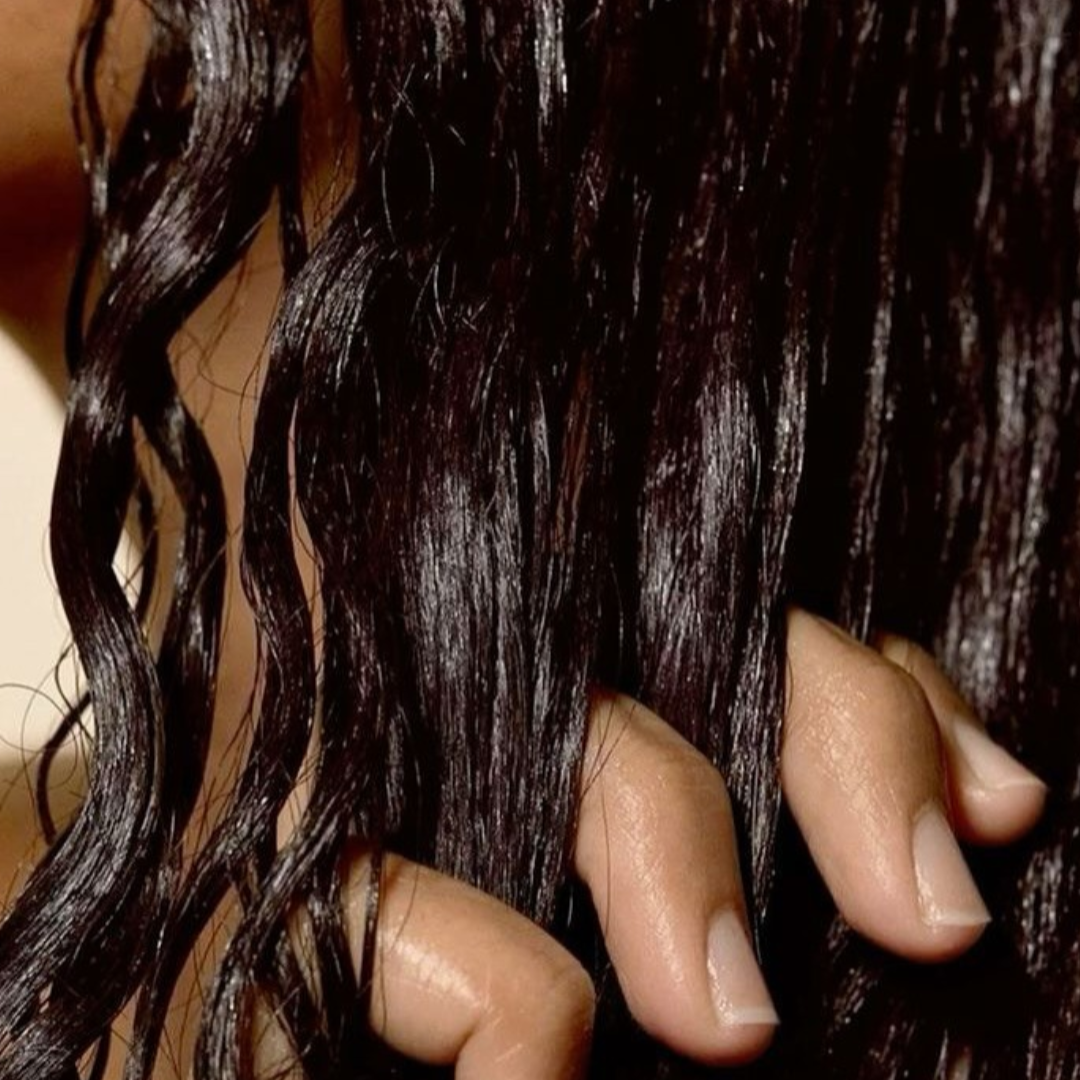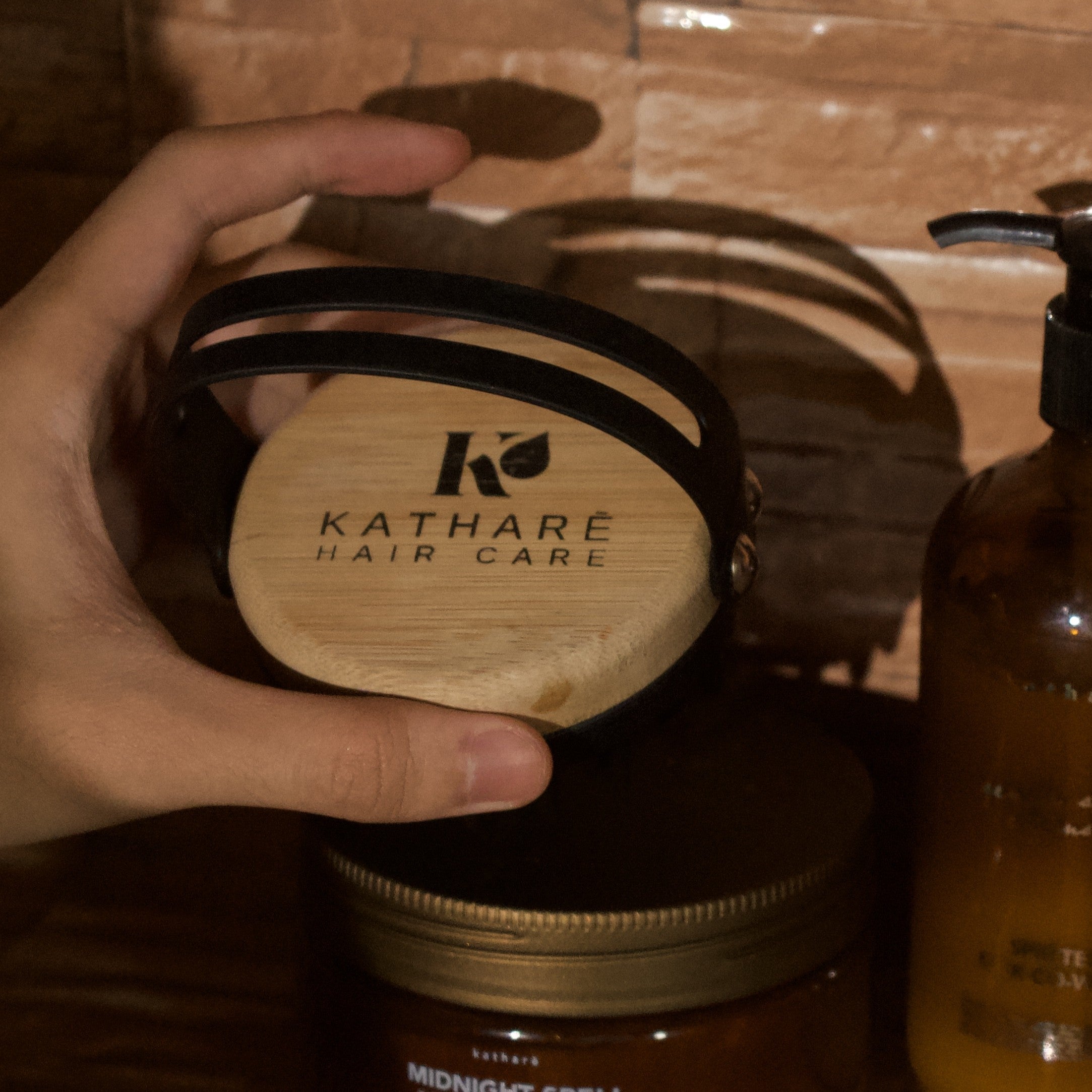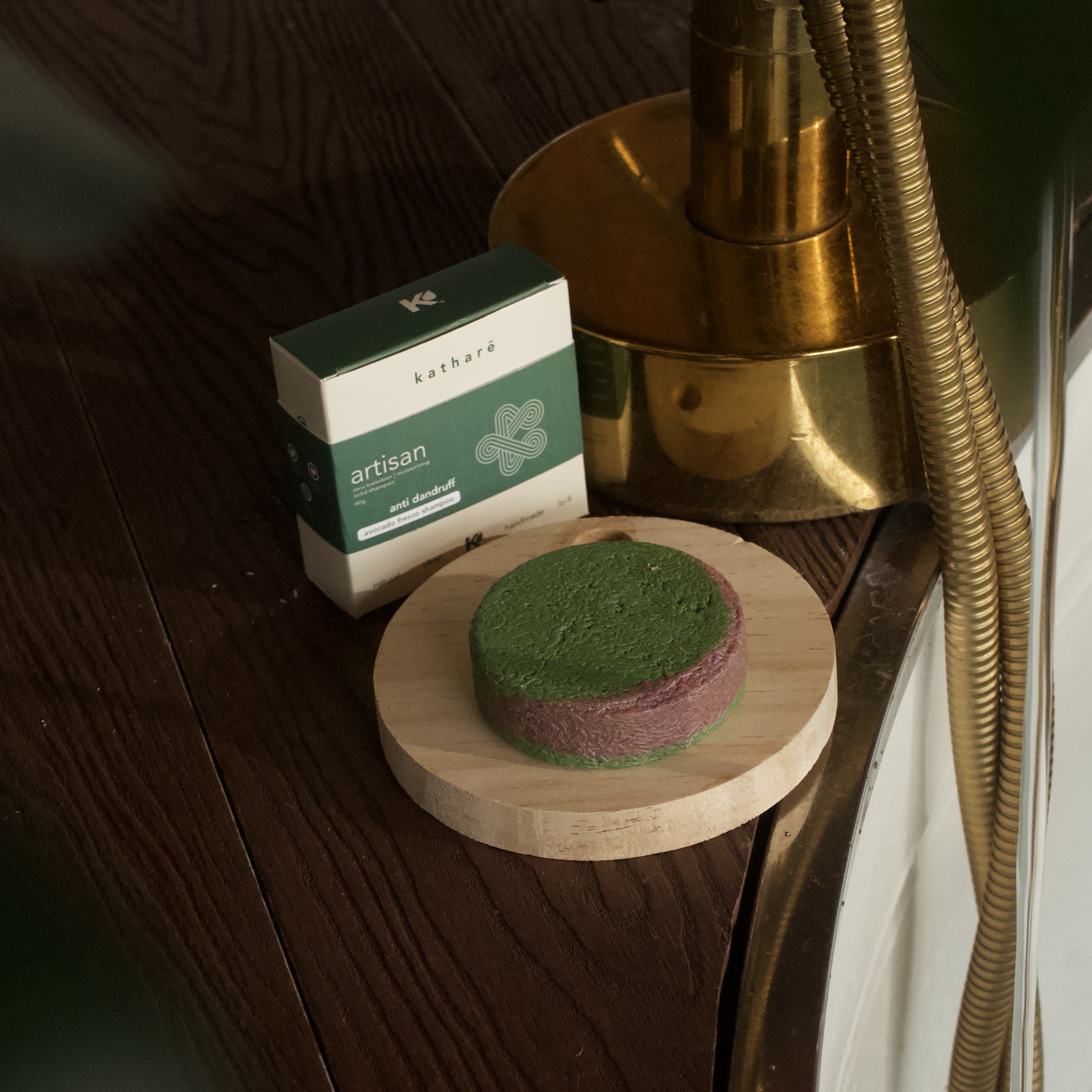Katharē Hair Tips
SENSITIVE SCALP: Why Your Scalp Reacts to Everything
A sensitive scalp reacts due to inflammation or a weakened skin barrier. The best approach is to reduce triggers, simplify products, and calm the scalp before treating other concerns.
Learn moreBUILD-UP / CONGESTED SCALP: When Clean Hair Still Feels Dirty
A congested scalp occurs when oil, product residue, sweat, and dead skin accumulate and clog hair follicles. The solution is to clear buildup first, then apply targeted scalp care.
Learn moreDRY SCALP: Causes, Symptoms, and the Best Routine to Restore Moisture
A dry scalp happens when the scalp lacks moisture and natural oils, often due to over-cleansing, hot showers, dehydration, or environmental factors. The best way to treat dry scalp is to repair the scalp barrier, reduce stripping cleansers, and focus on hydration.
Learn moreOILY SCALP: Causes, Signs, and the Best Routine to Balance It Quick Answer
An oily scalp happens when sebaceous glands produce excess oil, often triggered by stress, hormones, humidity, or harsh cleansing. The best way to manage an oily scalp is to balance oil production, cleanse gently, and avoid stripping the scalp.
Learn morePost-Workout Hair Detox: Your Healthy Scalp Guide
You crushed your workout! But here’s the real talk: that satisfying sweat session can sometimes lead to a frustrating scalp situation. If your roots look greasy or your scalp feels itchy after a gym session, you might be blaming the heat, but the issue is deeper. You need a dedicated post-workout hair detox. We’ll show you the simple routine that keeps your scalp calm, clean, and healthy after every activity, starting with the right natural shampoo for sweaty hair.
Learn moreBest Travel Shampoo for Carry-On: The Ultimate TSA Guide
Your shower shelf is probably overflowing, right? And maybe you've heard some weird stuff about shampoo bars – like they don't actually work, or they're just for super eco-nerds, or even that they're a total pain to use. We totally get it; there are a ton of shampoo bar myths floating around. But here’s the kicker: A lot of that chatter? It's just that—chatter. And honestly, some of those big brands might actually want you to keep believing those myths. Why? Because the truth is, a good shampoo bar is your hair's new best friend, a total game-changer for everyday hair care.
Learn moreNew Motherhood Stress and Effect on Self-Confidence
What if a single product could be a reset button for your entire day? For Abi, a new mom, the answer was in our new Flow Scalp Tonic. She described it as a dose of "good vibes" that instantly took away her "bad mood." It's more than a product; it's a small, daily ritual that makes a big difference.
Learn moreYour Hair Isn't the Problem. Your Routine Might Be.
Think you know what’s causing your bad hair days? The answer might be closer to home than you think. You've probably blamed the humidity, your genes, or a specific product, but it's often the small, daily habits that are silently damaging your hair. We're talking about the silent hair routine mistakes you make without even knowing. Get ready to stop fighting your natural hair and start loving it, because your hair isn't the problem—the routine might be.
Learn moreSay Goodbye to Split Ends: Your Ultimate Hair Fix Guide
Ever catch a glimpse of your hair in the mirror and spot those annoying little white dots or frayed ends? Ugh. Split ends are the ultimate hair buzzkill, making your locks look dull and feel rough, no matter how much conditioner you pile on. It feels like a never-ending battle, right? But what if we told you that understanding what causes split ends is actually the first big step to ditching them for good? We're talking real talk about why your hair gets those annoying frays and, more importantly, how some simple tweaks to your everyday routine can genuinely help you get rid of them.
Learn more









